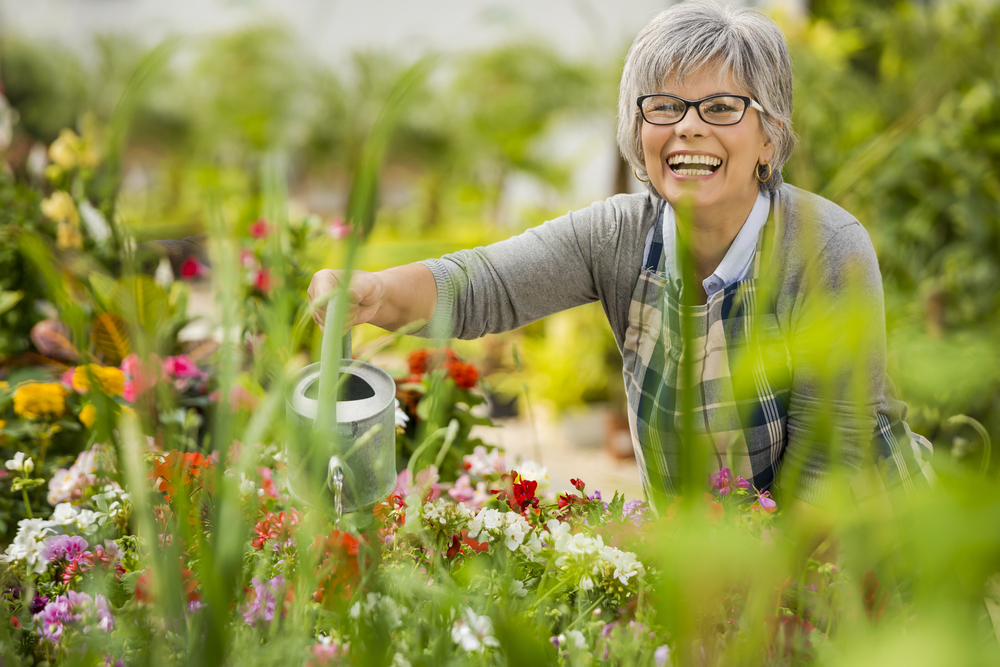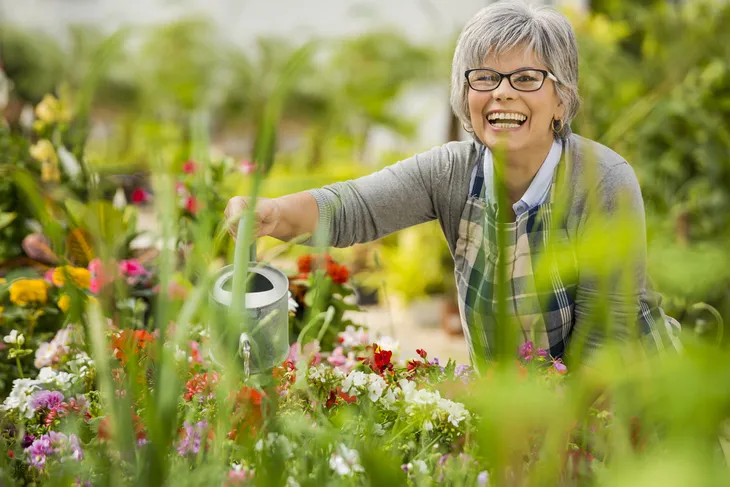Gardening is a great way to stay active, keep you busy, and not to mention is a favorite hobby for many! But gardening isn’t always easy especially if you suffer from arthritis. According to the Centers for Disease Control and Prevention (CDC), about 23-percent of all adults in the United States have arthritis. Thankfully there are ways you can manage.
Gardening with arthritis can be a bit of a learning curve but you simply need to adapt and learn how to manage the pain. Follow along as we explore the top tips that will help prevent arthritis symptoms and ensure you’re having fun and enjoying gardening.
Start by Planning and Set Manageable Goals
Gardening can be a lot of work and your plants will need maintenance all summer. Before starting it would be best to make a plan so you can spread out your tasks throughout the week. This will prevent you from overloading your day, and putting too much stress on your joints.
To begin, start by prioritizing the tasks that are most important to you such as weeding your front garden or hauling debris. It would also be a good idea to plan smarter so you can reduce your workload later in the season. Some great ideas include laying mulch on your flower beds so they can retain moisture better or using a weed mat to deter annoying weeds.
Warm-Up
Gardening is a form of exercise and you should treat it as a workout. Just like every other type of workout, you should start with a warm-up. Johnny Lee, M.D., director of the Asian Heart Initiative at the New York University Langone Medical Center explains, “Warming up before any workout or sport is critical for preventing injury and prepping your body.”
A warm-up will dilate your blood vessels which ensures your muscles are equipped with enough oxygen. Further, it also raises your muscles’ temperature which is important for flexibility and efficiency. You can warm up before gardening by partaking in low-heart rate cardio such as walking in place or a quick walk around the block as well as stretching.
Use A Kneeling Pad
A lot of gardening requires being on your knees. Not only can this be uncomfortable for the average person but especially for those who have arthritis. When you do have to work from the ground, be sure to use a good kneeling pad. It would also be a great idea to only be on your knees for short periods of time.
Further, when kneeling be sure to brace yourself with one arm while you work. This will help spread your weight and reduce the strain on your knees.
Work at Waist Level When Possible
Gardening often requires a lot of bending and stooping. Try your best to work at waist level when possible. You can even try using a small garden bench instead of squatting down.
Further, whenever you’re potting plants, you may also want to consider working at a gardening table. All of these best practices will help prevent a sore lower back and sore knees!
Use the Proper Tools
Did you know there are tools specifically designed for people with arthritis? Check out these arthritis gardening supplies that feature things like arm support cuffs, tools with longer handles, as well as tools with easy-grip handles.
A good set of gardening tools will make all the difference in how you feel after gardening. In addition to a good set of tools, be sure to try your best to avoid overhead work such as reaching to trim or prune bushes and trees. Instead, use longer-handled tools, or use a ladder to reach higher places.
Take Frequent Breaks
One of the best things you can do for yourself while gardening is to take frequent breaks. Not only does this help break up the workload but it will give your joints a break.
You could use your break to kick your feet up and enjoy a snack or you can do a few quick stretches. If you are starting to feel the pain of arthritis a great way to ease the pain is to take a break and ice the area. Fill a bag with ice and wrap it with a soft cloth and then ice the area to help reduce inflammation and swelling.
Change Your Routine
In addition to taking frequent breaks, it’s also important to change your routine. If you’re working on the same task for hours you can put a lot of stress on your joints!
First, know your limit. You need to determine how long you can go working on the same task before it causes you pain. Be sure to switch up what you’re working on every hour or few hours. For example, you can go from weeding your flower bed to walking around the garden watering flowers. Changing your routine will help give your joints a much-needed break.
Drink Lots of Water
Drinking water is so important because it helps your body function properly from digestion and circulation to transporting nutrients and maintaining body temperature. The human body is also made of 60-percent water so it’s important to replenish your body to keep it working as it should.
Gardening can be physically exhausting just like any other workout, so drinking water before, during, and after is a good idea. Water will keep your body hydrated and your joints lubricated which all plays a part in preventing gout attacks. With all of that said, be sure to bring a water bottle out with you before beginning your tasks and take many breaks to drink more water!
Be Strategic About Your Plant Choices
The fun thing about gardening is that there are so many plants to choose from. That said, if you have arthritis you might want to be strategic about your plant choices. Firstly, don’t pick fussy or demanding plants as this will only make more work for you.
When choosing plants try to pick low maintenance varieties as this will not only create less work but will ensure your garden looks its best when you go on holidays or aren’t feeling up to gardening. Some great plant options include lavender, elephant’s ears, and shrubs like escallonia and barberry. You may also want to consider planting wildflowers as they usually don’t need tending. As a bonus, wildflowers will bring wildlife into your garden!
Don’t Be Afraid To Ask For Help
Many gardeners don’t like hiring help but you also need to know your limit. Never be afraid to ask for help even if it’s just to help you with some of the heavy liftings.
Some things you may want to consider getting help with are digging, lifting bags of soil or other heavy items, aerating the lawn, and hauling rocks. Choose people you are comfortable with whether that means you hire a professional or ask family members and friends.













